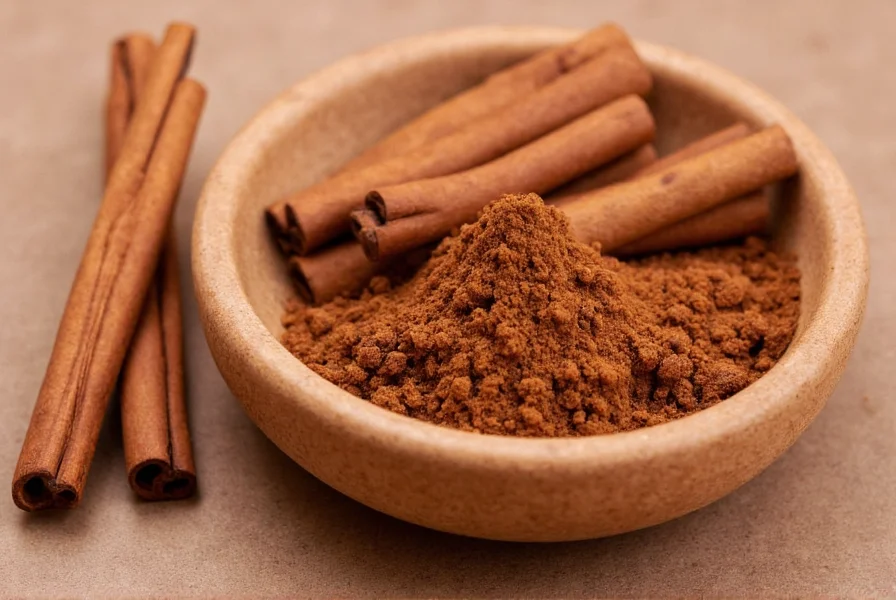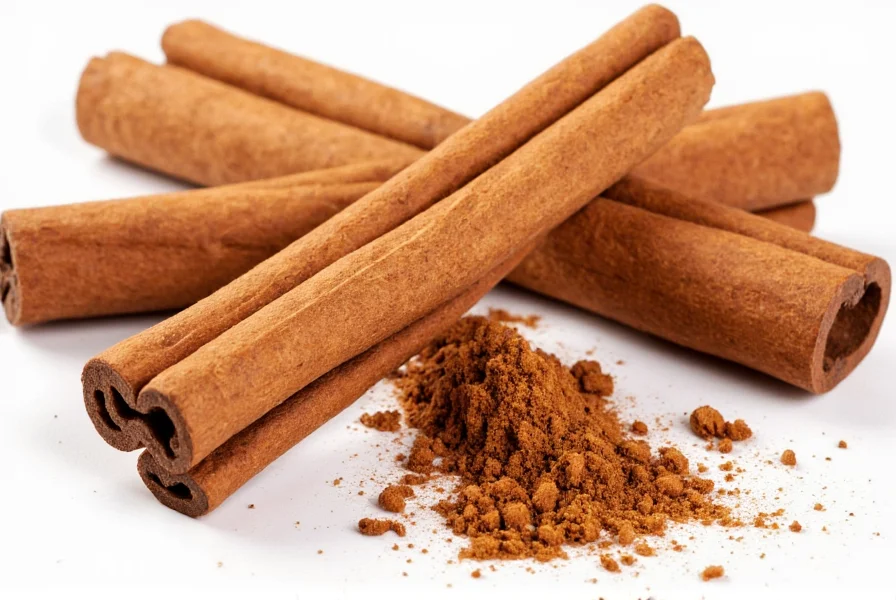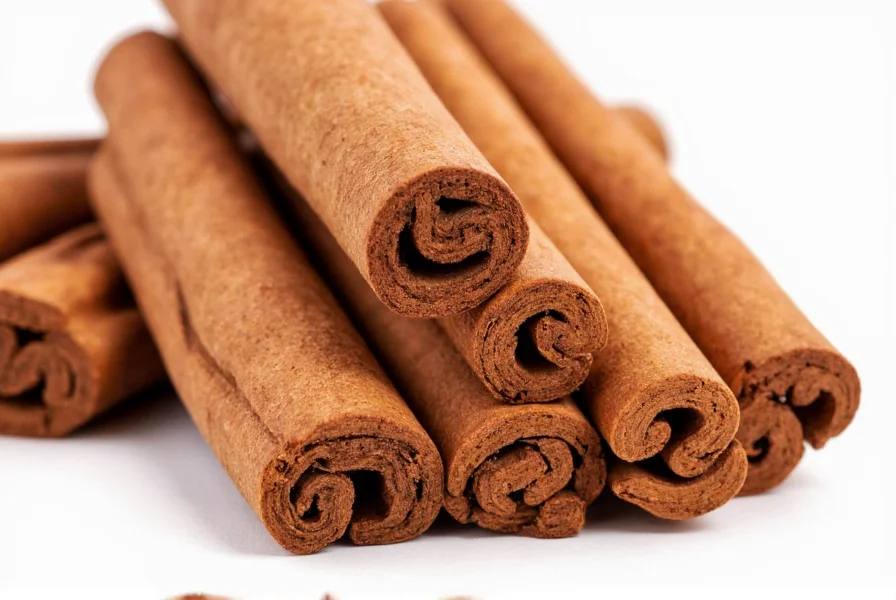Cinnamon has been prized for thousands of years across civilizations, from ancient Egypt to traditional Chinese medicine. This versatile spice comes in two primary forms that differ significantly in composition, flavor profile, and health implications. Understanding these differences is crucial for both culinary applications and potential health benefits.
Types of Cinnamon: Ceylon vs. Cassia
When exploring cinnamon varieties for baking and cooking, consumers typically encounter two main types:
| Characteristic | Ceylon Cinnamon | Cassia Cinnamon |
|---|---|---|
| Origin | Sri Lanka, India, Madagascar | China, Indonesia, Vietnam |
| Appearance | Multiple thin, delicate layers (like parchment) | Thick, hard single卷 (like a cigar) |
| Taste | Milder, sweeter, more complex | Stronger, hotter, more pungent |
| Coumarin Content | Very low (0.004%) | High (1-5%) |
| Price | More expensive | Less expensive |
Ceylon cinnamon (Cinnamomum verum), often called "true cinnamon," features multiple thin layers that create a delicate, brittle quill. Its flavor is more nuanced with citrus notes, making it preferred in European baking traditions and delicate desserts. Cassia cinnamon (Cinnamomum cassia), commonly sold as "cinnamon" in the United States, has a stronger, more intense flavor profile that works well in robust recipes and savory dishes.

Nutritional Profile and Health Benefits
The antioxidant properties of cinnamon bark have been extensively studied, with research indicating significant potential health benefits. A single tablespoon (approximately 5 grams) of ground cinnamon contains:
- 21 calories
- 6 grams carbohydrates
- 4 grams fiber
- Significant amounts of manganese, calcium, and iron
- Minimal fat and protein
Studies suggest that regular consumption of cinnamon in culinary amounts may support:
- Blood sugar regulation - Some research indicates cinnamon may improve insulin sensitivity and lower blood glucose levels
- Anti-inflammatory effects - The compound cinnamaldehyde shows potential in reducing inflammation markers
- Heart health support - May help reduce triglycerides, LDL cholesterol, and blood pressure
- Antimicrobial properties - Effective against certain bacteria and fungi
When considering cinnamon supplementation for health benefits, it's important to note that most studies use concentrated extracts rather than culinary amounts. The European Food Safety Authority recommends limiting coumarin intake to 0.1 mg per kg of body weight daily, which translates to approximately 1-2 teaspoons of Cassia cinnamon for most adults.
Culinary Applications Around the World
Cinnamon's versatility makes it valuable in global cooking traditions and flavor pairings. Different cultures utilize this spice in distinctive ways:
- Middle Eastern cuisine - Essential in spice blends like baharat and used in savory meat dishes
- Mexican cooking - Key ingredient in mole sauces and traditional hot chocolate
- Indian recipes - Found in garam masala and many rice dishes
- European baking - Central to apple pies, snickerdoodles, and Scandinavian pastries
- North African tagines - Balances sweet and savory elements in slow-cooked dishes
For those exploring how to use cinnamon in savory dishes, consider adding small amounts to tomato-based sauces, braised meats, or roasted vegetables. The spice pairs particularly well with sweet potatoes, carrots, and squash. When baking, remember that Ceylon cinnamon's more delicate flavor may require slightly larger quantities than Cassia to achieve the same intensity.

Selecting and Storing Cinnamon
When purchasing cinnamon, consider these factors for maximizing freshness and flavor retention:
- Form - Whole sticks retain freshness longer than ground powder (up to 3-4 years vs. 6-12 months)
- Packaging - Look for airtight containers that protect from light and moisture
- Origin labeling - Reputable sellers often specify whether it's Ceylon or Cassia
- Aroma test - Fresh cinnamon should have a strong, sweet fragrance when broken
Proper storage significantly impacts maintaining cinnamon's aromatic compounds. Keep your cinnamon in an airtight container away from heat and light. Ground cinnamon loses potency more quickly than sticks, so consider buying whole sticks and grinding them as needed using a dedicated spice grinder or mortar and pestle.
Safety Considerations and Recommended Intake
While cinnamon is safe for most people in culinary amounts, certain considerations apply when examining cinnamon consumption safety guidelines:
- Coumarin content - Cassia cinnamon contains higher levels that may cause liver damage with prolonged excessive consumption
- Blood thinning - Cinnamon may interact with anticoagulant medications
- Pregnancy considerations - Culinary amounts are generally safe, but therapeutic doses should be avoided
- Allergic reactions - Rare, but possible, especially with direct skin contact
The acceptable daily intake of coumarin is approximately 0.05-0.1 mg per pound (0.1-0.2 mg per kg) of body weight. For a 150-pound (68 kg) adult, this translates to no more than 1-2 teaspoons of Cassia cinnamon daily. Those with liver conditions or taking medications should consult healthcare providers before consuming cinnamon in therapeutic amounts.
Conclusion
Cinnamon's rich history, distinctive flavor, and potential health properties make it one of the world's most beloved spices. Understanding the differences between Ceylon and Cassia varieties allows consumers to make informed choices based on their culinary needs and health considerations. Whether used sparingly as a flavor enhancer or incorporated thoughtfully for potential wellness benefits, cinnamon remains a versatile kitchen staple with global significance. When selecting and using this spice, attention to variety, quality, and appropriate quantities ensures both delicious results and safe consumption.
Frequently Asked Questions
What's the difference between Ceylon and Cassia cinnamon?
Ceylon cinnamon (true cinnamon) has multiple thin, delicate layers, a milder sweeter flavor, and very low coumarin content. Cassia cinnamon has a thick, hard single卷 structure, stronger flavor, and higher coumarin levels. Ceylon is typically more expensive and preferred for delicate dishes, while Cassia is more common in the US and works well in robust recipes.
How much cinnamon can I safely consume daily?
For Cassia cinnamon, limit intake to 1-2 teaspoons daily due to its higher coumarin content. Ceylon cinnamon has minimal coumarin, so you can safely consume larger amounts. People with liver conditions or taking blood thinners should consult their healthcare provider before regular consumption.
Does cinnamon really help regulate blood sugar?
Some studies suggest cinnamon may improve insulin sensitivity and lower blood glucose levels, but results are mixed. The effect appears modest and temporary. Cinnamon shouldn't replace diabetes medication, but incorporating it into a balanced diet may provide additional support for blood sugar management.
How can I tell if my cinnamon is Ceylon or Cassia?
Ceylon cinnamon forms multiple thin, papery layers that are easy to crumble, while Cassia forms a single thick, hard roll. Ceylon has a lighter brown color and more delicate, sweeter aroma. Check product labels for "Ceylon" or "true cinnamon" designations, as many premium spice brands now specify the variety.
What's the best way to store cinnamon to maintain freshness?
Store cinnamon in an airtight container away from heat, light, and moisture. Whole cinnamon sticks retain freshness for 3-4 years, while ground cinnamon stays potent for 6-12 months. For maximum flavor, buy whole sticks and grind them as needed using a dedicated spice grinder.











 浙公网安备
33010002000092号
浙公网安备
33010002000092号 浙B2-20120091-4
浙B2-20120091-4